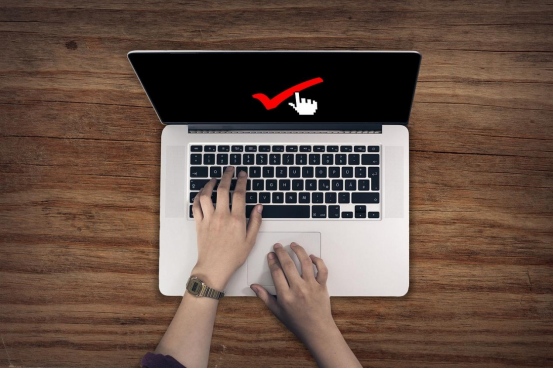
Have you ever been asked to enter a verification code or complete some other verification step when visiting a website? These measures are usually taken to prevent bot traffic from affecting the website. Bot traffic is generated by automated software rather than real people, which can have a huge impact on the website's analytics data, overall security, and performance. Therefore, many websites use tools such as CAPTCHA to identify and prevent bot traffic from entering. This article will explain what bot traffic is, how to use it legally through residential-proxies, and how to detect malicious bot traffic.
Before understanding robot traffic, we need to understand what human traffic is. Human traffic refers to those interactions with the website generated by real users through the use of web browsers , such as browsing pages, filling out forms, and clicking links, which are all achieved through manual operations.
However, bot traffic is generated by computer programs (i.e., "bots"). Bot traffic does not require manual action from a user, but rather interacts with a website through automated scripts. These scripts can be written to simulate the behavior of a real user, visiting web pages, clicking links, filling out forms, and even performing more complex actions.
Bot traffic is usually generated through the following steps:
The sources of bot traffic are very wide, which is inseparable from the diversity of bots themselves. Bots can come from personal computers, servers, and even cloud service providers around the world. But bots themselves are not inherently good or bad , they are just tools that people use for various purposes. The difference lies in how the bot is programmed and the intentions of the people who use it . For example, ad fraud bots automatically click on ads to earn a lot of ad revenue, while legitimate advertisers use ad verification bots for detection and verification.
Bot traffic used Legitimately
Legitimate uses of robot traffic usually achieve beneficial purposes while complying with the site's rules and protocols and avoiding excessive load on the server. Here are some examples of legitimate uses:
Search engines such as Google and Bing use crawlers to crawl and index web page content so that users can find relevant information through search engines.
Some legitimate companies use robots to crawl public data. For example, price comparison websites automatically crawl price information from different e-commerce websites in order to provide comparison services to users.
Use robots to monitor the performance, response time, and availability of their website to ensure it is always performing at its best.
Bot traffic used maliciously
In contrast to ethical use, malicious use of robot traffic often has a negative impact on a website or even causes damage. The goal of malicious robots is usually to make illegal profits or disrupt the normal operations of competitors. The following are some common malicious use scenarios:
Malicious bots can be used to perform DDoS (distributed denial of service) attacks, sending a large number of requests to a target website in an attempt to overwhelm the server and make the website inaccessible.
Some bots attempt to crack user accounts using a large number of username and password combinations to gain unauthorized access.
Malicious robots scrape content from other websites and publish it to other platforms without authorization to generate advertising revenue or other benefits.

In the process of ethical use of robots, although the goal is a legitimate task (such as data scraping, website monitoring, etc.), you may still encounter the website's anti-robot measures, such as CAPTCHA, IP blocking, rate limiting, etc. To avoid these blocking measures, the following are some common strategies:
Follow robots.txt file
The robots.txt file is a file used by webmasters to instruct search engine crawlers which pages they can and cannot access. Respecting the robots.txt file can reduce the risk of being blocked and ensure that the crawling behavior meets the requirements of the webmaster.
# Example: Checking the robots.txt file import requests url = 'https://example.com/robots.txt' response = requests.get(url) print(response.text)
Controlling the crawl rate
Too high a crawl rate may trigger the website's anti-bot measures, resulting in IP blocking or request blocking. By setting a reasonable crawl interval and simulating the behavior of human users, the risk of being detected and blocked can be effectively reduced.
import time import requests urls = ['https://example.com/page1', 'https://example.com/page2'] for url in urls: response = requests.get(url) print(response.status_code) time.sleep(5) #5 seconds interval to simulate human behavior
Use a residential proxy or rotate IP addresses
Residential-Proxies, such as 911Proxy, route traffic through real home networks. Their IP addresses are often seen as residential addresses of ordinary users, so they are not easily identified as robot traffic by websites. In addition, by rotating different IP addresses, Avoid frequent use of a single IP and reduce the risk of being blocked.
# Example: Making requests using a residential proxy proxies = { 'http': 'http://user:password@proxy-residential.example.com:port', 'https': 'http://user:password@proxy-residential.example.com:port', } response = requests.get('https://example.com', proxies=proxies) print(response.status_code)
Simulate real user behavior
By using tools like Selenium, you can simulate the behavior of real users in the browser, such as clicks, scrolling, mouse movements, etc. Simulating real user behavior can deceive some anti-bot measures based on behavioral analysis.
from selenium import webdriver from selenium.webdriver.common.by import By driver = webdriver.Chrome() driver.get('https://example.com') # Simulate user scrolling the page driver.execute_script("window.scrollTo(0, document.body.scrollHeight);") # Simulate click button = driver.find_element(By.ID, 'some-button') button.click() driver.quit()
Avoid triggering CAPTCHA
CAPTCHA is one of the most common anti-bot measures and often blocks access to automated tools. While bypassing CAPTCHAs directly is unethical and potentially illegal, it is possible to avoid triggering CAPTCHAs by using reasonable crawling rates, using Residential-Proxies, etc. For specific operations , please refer to my other blog to bypass the verification code.
Use request headers and cookies to simulate normal browsing
By setting reasonable request headers (such as User-Agent, Referer, etc.) and maintaining session cookies, real browser requests can be better simulated, thereby reducing the possibility of being intercepted.
headers = { 'User-Agent': 'Mozilla/5.0 (Windows NT 10.0; Win64; x64) AppleWebKit/537.36 (KHTML, like Gecko) Chrome/91.0.4472.124 Safari/537.36', 'Referer': 'https://example.com', } cookies = { 'session': 'your-session-cookie-value' } response = requests.get('https://example.com', headers=headers, cookies=cookies) print(response.text)
Randomize request pattern
By randomizing the crawling time interval, request order, and using different browser configurations (such as User-Agent), the risk of being detected as a robot can be effectively reduced.
import random import time urls = ['https://example.com/page1', 'https://example.com/page2'] for url in urls: response = requests.get(url) print(response.status_code) time.sleep(random.uniform(3, 10)) # Random interval of 3 to 10 seconds

Detecting and identifying malicious robot traffic is critical to protecting website security and maintaining normal operation. Malicious robot traffic often exhibits abnormal behavior patterns and may pose a threat to the website. The following are several common detection methods to identify malicious robot traffic:
By analyzing website traffic data, administrators can find some abnormal patterns that may be signs of robot traffic. For example, if a certain IP address initiates a large number of requests in a very short period of time, or the traffic of certain access paths increases abnormally, these may be manifestations of robot traffic.
Behavioral analysis tools can help administrators identify abnormal user behaviors, such as excessively fast click speeds, unreasonable page dwell time, etc. By analyzing these behaviors, administrators can identify possible robot traffic.
Sometimes, bot traffic is concentrated in certain IP addresses or geographic locations. If your site is receiving traffic from unusual locations, or if those locations send a large number of requests in a short period of time, then that traffic is likely coming from bots.
Introducing verification codes or other forms of verification measures is an effective way to block robot traffic. Although this may have a certain impact on the user experience, by setting reasonable trigger conditions, the impact can be minimized while ensuring security.
現代の Web 環境では、ロボット トラフィックが大手 Web サイトが直面する大きな課題となっています。ロボット トラフィックは正当で有益な目的に使用される場合がありますが、悪意のあるロボット トラフィックは Web サイトのセキュリティとパフォーマンスに重大な脅威をもたらす可能性があります。この課題に対処するには、Web サイト管理者はロボット トラフィックを識別してブロックする方法を習得する必要があります。 Web サイトのブロック対策を回避する必要があるユーザーにとって、911Proxy などの住宅用プロキシ サービスの使用は間違いなく効果的なソリューションです。結局のところ、ウェブサイト管理者も一般ユーザーも常に警戒を怠らず、適切なツールと戦略を使用してロボット トラフィックによってもたらされる課題に対処する必要があります。
The above is the detailed content of Using Residential-Proxies to Address Bot Traffic Challenges: A Guide to Identification, Use, and Detection. For more information, please follow other related articles on the PHP Chinese website!




